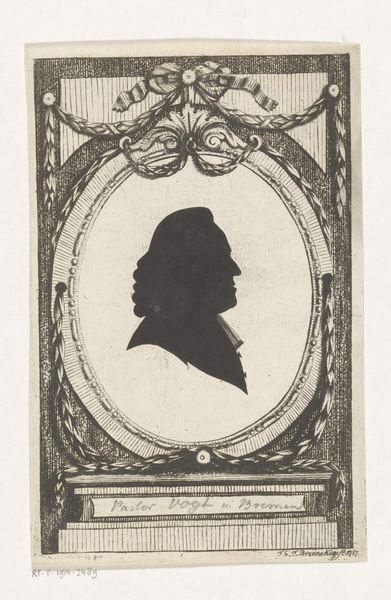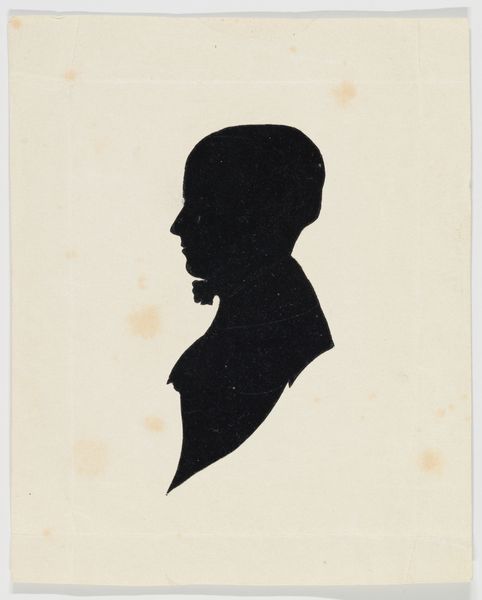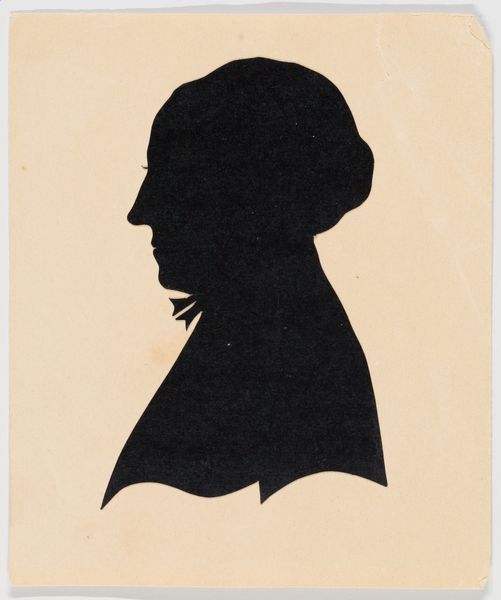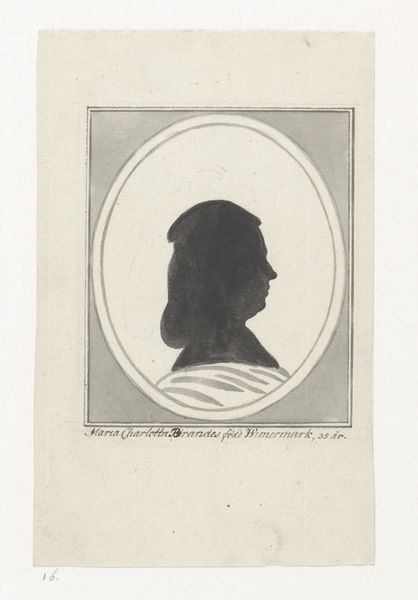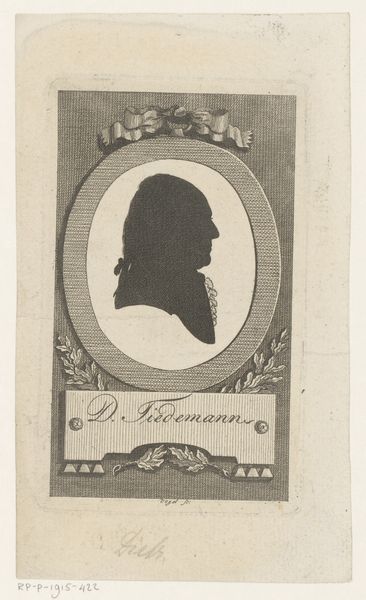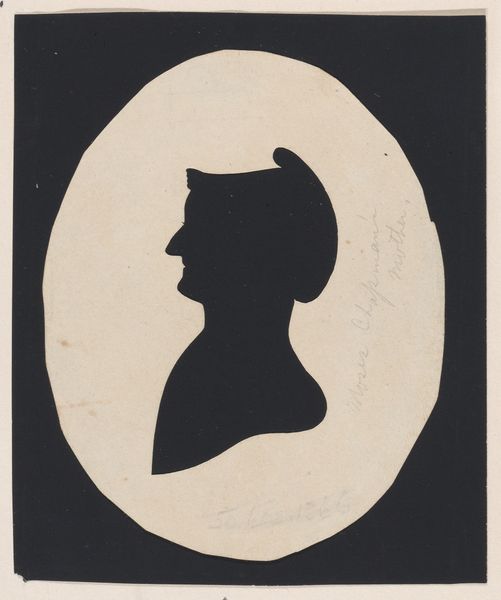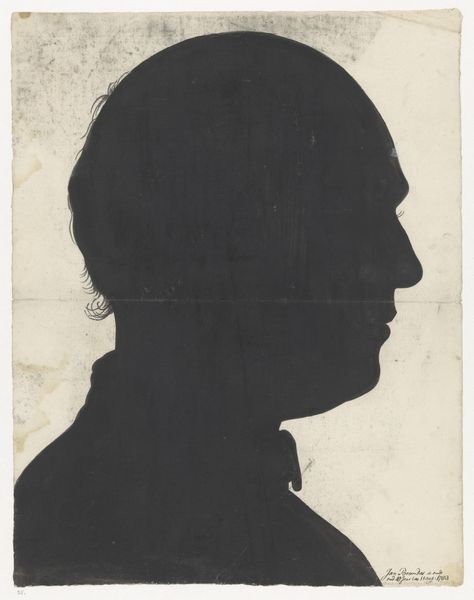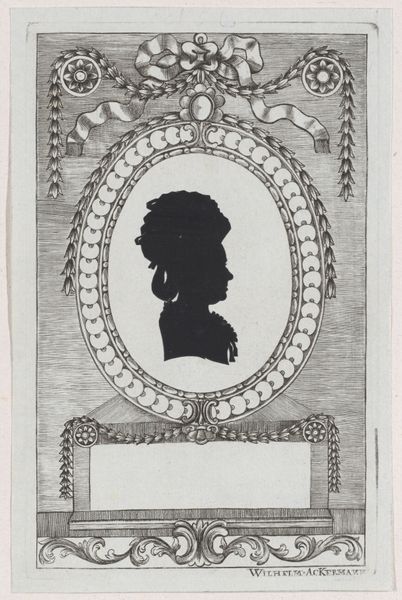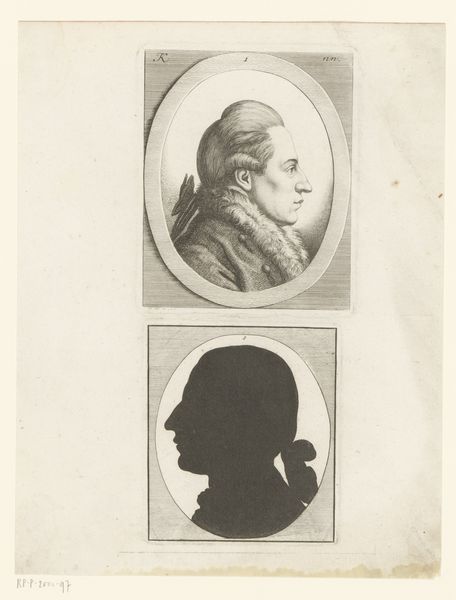
print, engraving
# print
#
caricature
#
old engraving style
#
caricature
#
engraving
#
profile
Dimensions: height 190 mm, width 123 mm
Copyright: Rijks Museum: Open Domain
Editor: So this engraving, titled "Silhouet portret van een onbekende man," created sometime between 1760 and 1820, presents an anonymous man’s silhouette within an ornate frame. There's a formality and a slight satirical edge to it that I find quite intriguing. What catches your eye in this piece? Curator: I’m immediately drawn to the politics embedded within what appears to be a simple portrait. During this era, silhouette portraits became incredibly popular, partially because they were a more affordable alternative to painted portraits, opening up representation to a wider public. Editor: That's interesting. So, accessibility influenced the art itself? Curator: Absolutely. Consider who typically commissioned portraits. They were markers of status and power, weren't they? But silhouettes democratized that, offering a form of visual representation to the burgeoning middle class. The ornate frame then, almost acts as a satirical comment on the traditional portraiture of the elite. What do you make of the anonymity? Editor: It’s a little strange; the ornate detailing suggests significance, yet we don’t know who this is. Was this anonymity common? Curator: Very much so. It adds another layer to the political context. While celebrating individual likeness, the anonymity maybe served as a buffer against potential social or political repercussions. It could be interpreted as a quiet rebellion. What I also find intriguing is the presence of caricatural elements within this otherwise formal context. This hints at social critique during this period. Editor: I never thought about silhouette portraits as potentially rebellious! It's fascinating how accessible art forms can hold such subtle, yet significant, social commentary. Curator: Indeed. Analyzing art within its socio-political context unlocks layers of meaning we might otherwise miss.
Comments
No comments
Be the first to comment and join the conversation on the ultimate creative platform.
